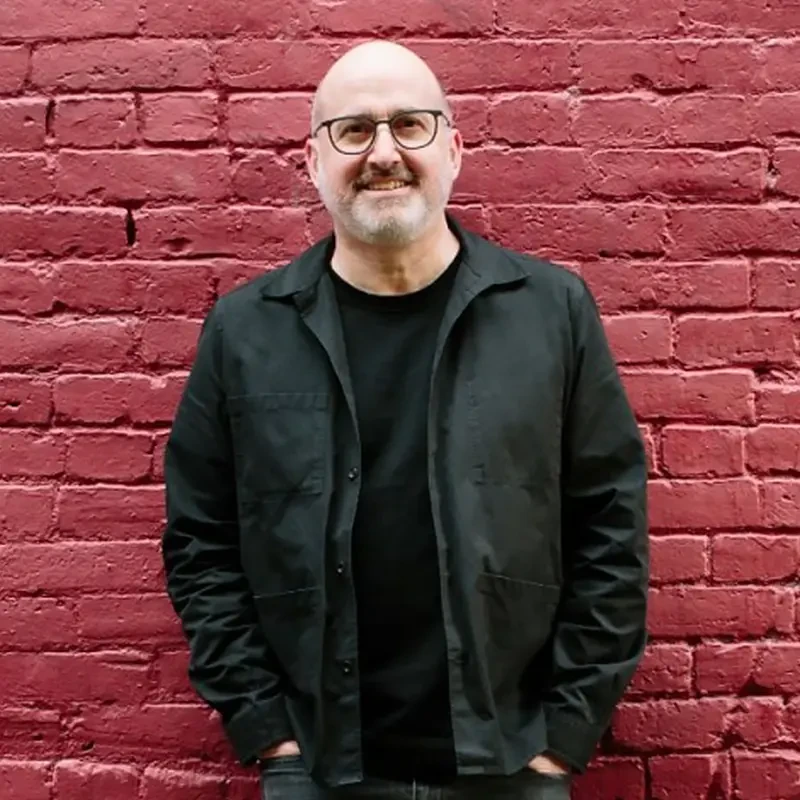
Where Do We Go from Here?
Scott Simpson
Senior Fellow, Design Futures Council
January 3, 2024
Scott Simpson speculates on AI’s impact on the design professions.
Not that long ago, architects focused principally on the design of static objects called buildings. Primary attention was given to the interplay of form and function. Budgets were seen as something of a nuisance — necessary but often at odds with the goal of creating “good design” (as defined by the architect rather than the owner). Scant attention was given to how materials were sourced, how labor was compensated, how much energy a structure consumed or the long-term costs of ownership and maintenance over the life cycle of the project. What did matter was creating eye-catching design that would attract public attention (and hopefully magazine editors as well).
Things are very different today. In just a few decades, we have learned a great deal about the impact of the built environment on ecology, economics, public health and safety, productivity and even politics. While design is still about the creation of “things” and “places,” it also concerns itself with processes. We live in a world of design. Nearly everything we see, touch or use has been designed and fabricated to serve our needs. Even our drinking water and food are processed. In a very real sense, it is no longer possible to live a life that has not been profoundly shaped by design, and this includes not only what we do but also how we do it.
Design’s power is a double-edged sword. The good news is that in a remarkably short time humans have learned how to wield considerable influence over their environment, making it safer and healthier for most people. The flip side is that there is still a lot that we don’t know, and we have seen plenty of evidence that good intentions can easily create unintended consequences. An obvious example is the invention of refrigerants that led to the widespread use of air conditioning but also contributed to creating a gaping hole in the ozone. That problem, now much better understood, has been successfully addressed, and the hole in the ozone is shrinking. So we’ve demonstrated that while we are capable of creating big problems, we are equally capable of solving them.
Design thinking is at the heart of these creative problem solving. It’s about recognizing conditions that are problematic and then devising ways to address them. Everything that moves us in a positive direction is an act of design, whether it has to do with “things” (the nouns) or “processes” (the verbs). For example, a smartphone is a “thing” in and of itself, but its real value is in process innovation. By providing a means of connecting people to a vast repository of shared knowledge at essentially zero cost, it opens huge new opportunities and, in turn, creates enormous value that was not previously possible.
The surprise is that most people do not think of design in terms of value creation, but that is the essence of what good design is all about. Remember that clients do not build buildings to spend money; they build buildings to make money. Design provides both the medium and the means to make that happen. In design, there are always more answers than questions, and no problem is unsolvable—even a problem that did not exist previously. When President Kennedy committed the nation to go to the moon, he had no idea what would have to be invented to make that happen because nobody knew what the problems would turn out to be; space was literally unexplored territory. However, in the process of making that dream come true, plenty of problems were discovered and then were solved, one by one. Design thinking enabled the moon landing to be a huge success, and it was achieved ahead of schedule.
By now, it should be obvious to all architects that our shared definition of “good design” is much too narrow. Ours is a profession steeped in tradition (which is not necessarily a bad thing) but also one that remains profoundly suboptimal. At about $1.5 trillion annually combined, design and construction are the third biggest segment of the national economy after government services and health care. Yet fully one-third of all projects do not meet budget or schedule, and the same percentage of construction materials routinely wind up as waste. A mere 10% in process improvement would result in savings of $150 billion per year — about three times the total compensation paid to all architects. The good news is that money is not the problem — there is clearly plenty of it sloshing around in the system. It just needs to be put to much better use. If we apply design thinking to the design profession itself, we can find ways to become significantly more creative and effective.
So why don’t we do this? Because human beings all too often default to the familiar and are blinded by convention. We have encoded an archaic design process — one that we know does not deliver optimal results for clients — into our standard contracts, which focus more on risk mitigation than value creation. We follow the predetermined footsteps from Schematic Design (SD) to Design Development (DD) to Construction Documents (CD) to Construction Administration (CA), as if doing so will teach us how to dance, but, in fact, those time-worn processes simply reinforce conventional thinking.
It is a supreme irony that architects, a class of people so good at inflicting change on others, are so reluctant to embrace fundamental change in the ways in which we work.
External influences now at play are leading to a revolution in how buildings are conceived, designed, constructed and operated. The revision of building codes is an obvious example. There is a clear trend to move in the direction of zero-carbon buildings which use renewable energy. Many municipalities have already implemented new regulations that prohibit the use of fossil fuels to heat and cool new projects. Of course, there is a big gap between good intentions and actual outcomes, but the long-term trends are clear.
With the advent of AI, the design community is facing its most profound challenge yet. The first thing that should be said is that nobody really understands AI’s full implications, but we can all read the tea leaves. In a typical architect’s contract, only 35% of the fee is devoted to the creative aspects (SD and DD) with fully 65% devoted to processes that can and should be substantially automated (CD and CA). What happens to conventional practice when much of that 65% can be produced more quickly and accurately at much lower cost by machines rather than people? The same thing that happened to bank tellers when ATMs were invented in the 1970s. There are still bank tellers, to be sure, but significantly fewer of them. In essence, we have all become our own bank tellers; we can take care of our financial needs with just a few taps on our smartphones. We carry our banks in our pockets.
Make no mistake: design is not going away any time soon. There is no limit to the creativity design thinking offers. It will just have to be applied in different ways. There was a time when expert draftsmanship was a highly valued skill set, but those days are long gone, and they are not coming back. Instead, we inhabit a much more complex and challenging profession that is tech-driven and requires a full measure of communication and collaboration skills with multiple team members to produce the desired results. This enables us to create ever more daring and inventive structures that would not be possible using more conventional means.
It is a supreme irony that architects, who are so good at inflicting change on others, are so reluctant to embrace fundamental change in the way in which they do their work. Yet change is inevitable. Our ability to provide valuable services to clients absolutely demands that we remain nimble. After all, routine is the enemy of innovation. Society is demanding that architects provide different kinds of solutions for new kinds of problems, and we should welcome that challenge.
It’s what design thinking is all about.
Scott Simpson is a senior fellow in the Design Futures Council and a regular contributor to DesignIntelligence.























































